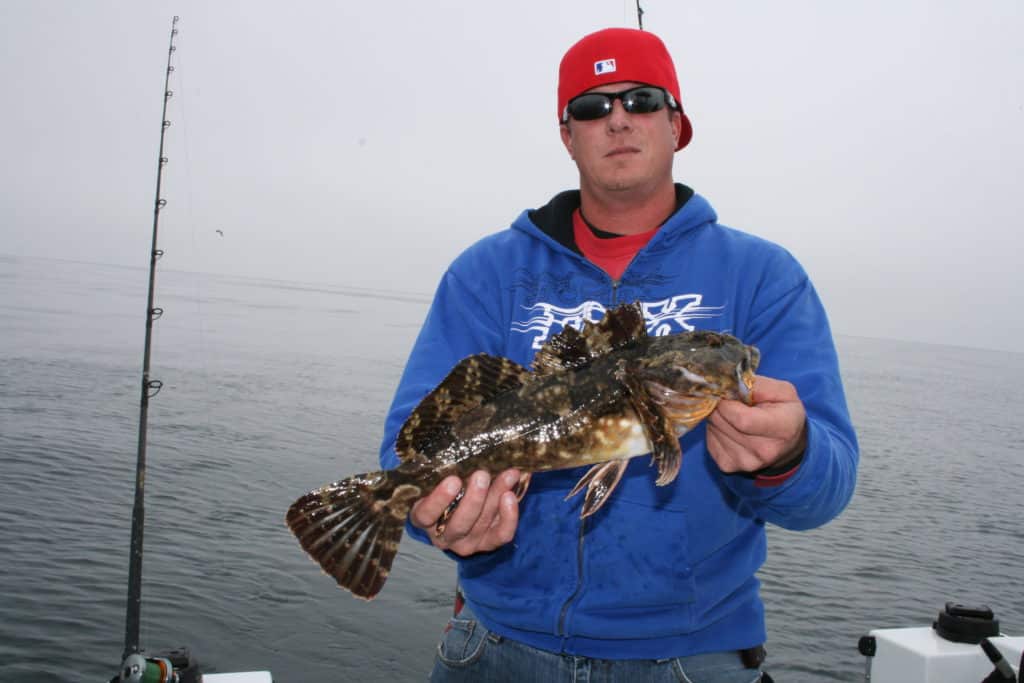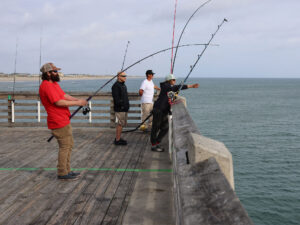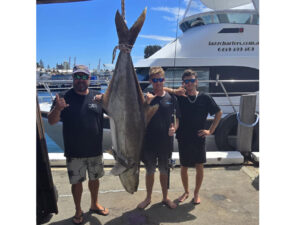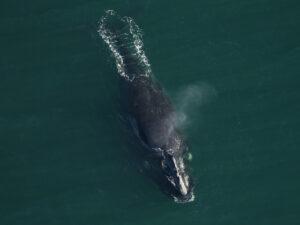
Cabezon
In the first study of the effectiveness of California’s controversial coastal marine protected areas (MPAs), a scientific team is reporting that populations and sizes of several key species of fish have increased more in MPAs established in between San Mateo and Santa Barbara counties than in areas nearby, according to a report in California’s Pasadena Star-News.
At the same time, the report also found that some species have declined in population compared to surrounding areas, a finding that was buried deep in the Star-News story.
The MPAs in the study were established in 2007, and researchers cautioned that years of additional study are needed, noting that in some areas there was little or no difference, according to the Star-News report. But overall, they said, the trends are encouraging — a key finding because California’s marine protected areas are being closely watched by other states and countries as a possible solution to improving the health of the world’s oceans, the newspaper reported.
The 29 zones ban fishing over roughly 94 square miles and limit it in 110 additional square miles — a combined area more than four times as large as San Francisco — between Pigeon Point, south of Half Moon Bay, and Point Conception, near Lompoc, said the report, which made no distinction between commercial fishing and recreational fishing. The areas make up about 18 percent of state waters out to three miles.
“It is fair for people to feel encouraged and optimistic,” Fred Keeley, a former Monterey Bay state assemblyman who co-authored the 1999 law that required the zones to be set up, was quoted as saying. “It is a more holistic, ecosystem-wide strategy to protect species. Species don’t exist in vacuums. They exist in ecosystems.”
The report, written by prominent California marine scientists, was released on February 27, 2013, to coincide with a three-day conference of marine biologists, fishermen and policy makers in Monterey called the “State of the Coast Symposium.” Open to the public, the event is hosted by the state Department of Fish and Wildlife, California Ocean Science Trust and others, according to the Star-News.
After the state Fish and Game Commission held hearings and approved the rules for the Central Coast in 2007, it wrote similar rules for the rest of California’s 1,100-mile coastline. The most recent ones, which took effect in December, extend from Mendocino to the Oregon border.
Among the study’s conclusions:
* In kelp forests, a range of economically important fish species, including cabezon, lingcod and black rockfish, increased in abundance in the MPAs compared with similar locations outside the areas from 2007 to 2012. Black rockfish, grass rockfish, cabezon and lingcod showed the largest increases.
* Copper rockfish, rubberlip sea perch and yellowtail sea perch did worse in marine protected areas, however, than the unprotected areas.
* Seven of 10 species of rockfish studied at Año Nuevo, Point Lobos, Piedras Blancas and Point Buchon were found to be larger in size inside the MPAs than outside.
* On rocky shores, numbers and sizes of black abalone and owl limpets increased inside protected areas, as did hermit crabs, purple urchins and starfish.
* Point Lobos, south of Carmel, which has been protected for 40 years, has higher numbers and larger rockfish fish than the new MPAs in nearby Carmel Bay.








